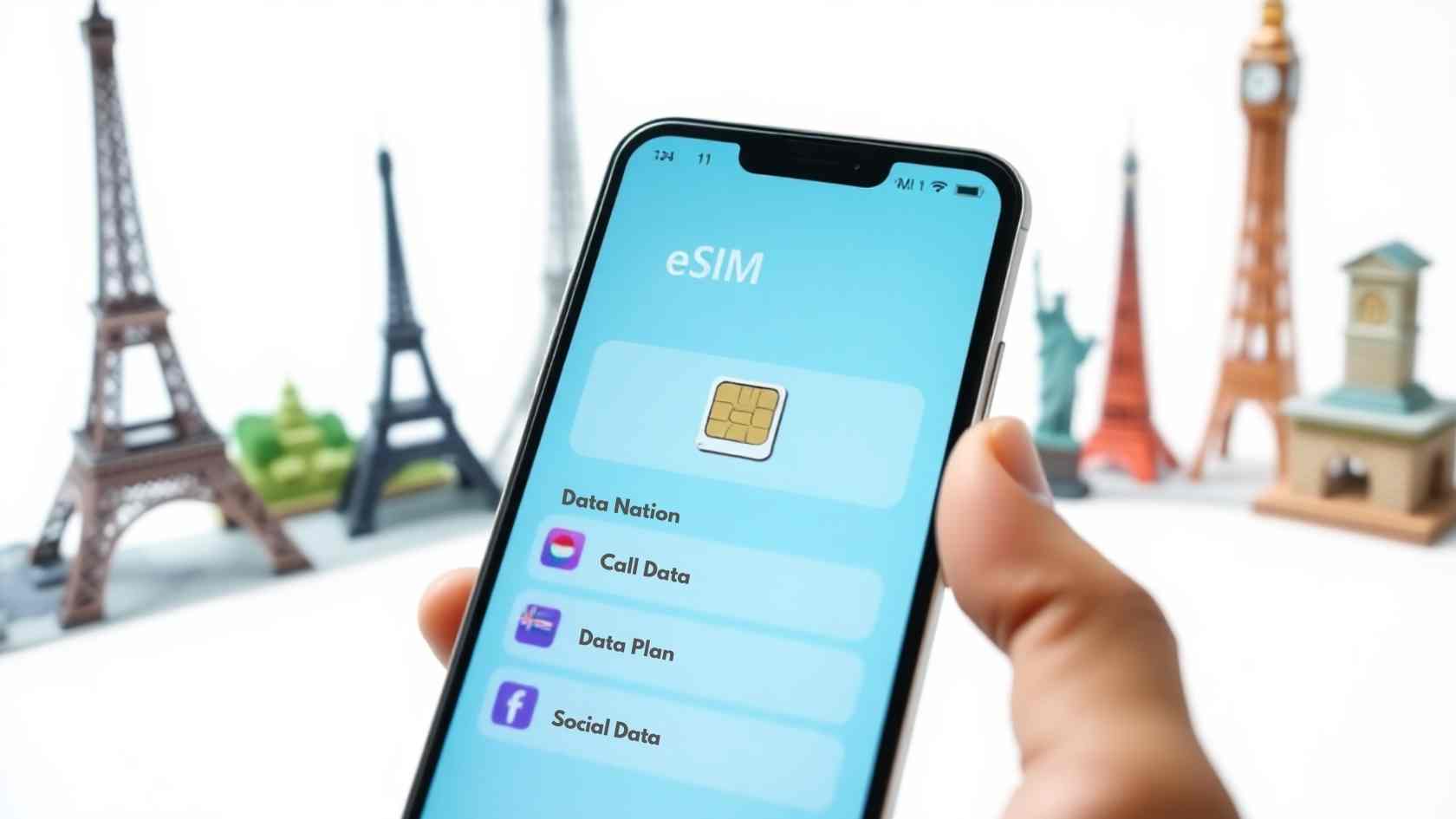Travel shouldn’t be an obstacle to exercising your fundamental right to enjoy the latest YouTube shorts or stay in touch with people back home. Indeed, easy choices for the connected globetrotter abound. Here are the six best, most straightforward ways of maintaining internet access suitable for anyone from beach dwellers to off-the-grid adventurers.
6 Best Ways to Get Internet While Traveling
1. eSIM Services
Nothing is easier, safer, or more convenient than leaving internet access abroad to a reliable eSIM service. The eSIM chip in your phone replaces traditional physical SIMs and connects to local cell tower networks without complicated setups or SIM swaps. It’s completely independent, letting you keep your original number just in case.

Take an eSIM for Europe as an example. The plans you’ll find will often be generous and reasonably priced. Coupled with extensive local coverage, you can browse or work freely and securely anywhere in Europe. You only have to choose a new plan once you enter a different region, and the eSIM service will handle the rest.
2. Mobile Data Roaming
Your carrier likely has deals with its counterparts in other countries, making data roaming possible. In some ways, this is even easier than using an eSIM – you turn on roaming, and your phone will do the rest. As long as there’s local coverage, you have internet access.
There’s just one not-so-tiny problem, though. Roaming is expensive, ridiculously so when taking the pay-as-you-go route. Plans range from $10 – $15 per day, with harsh speed throttling once you exceed the daily data limit. Pay-as-you-go is still manageable for calls and texts, but extremely expensive for data. A mere megabyte (you read that right) can set you back $2 or more, so things you don’t even think about, like apps updating in the background, can make for ballooning bills once you get home.
3. Local SIM Cards
Entrusting internet access to a well-known local carrier has its charms. The coverage is excellent, and you can use data at local rates. Depending on where you are, these are cheap.
There are a couple of downsides. First, you’ll need to dig out and replace your primary SIM, which can be fiddly. You might have to show some ID to get a new one and ensure the original, fragile SIM is stored safely—perhaps in a secure spot like a Wispwillow travel pouch. On top of that, you’ll lose access to your original number, meaning no direct contact with people who don’t use online communication apps and no ability to receive verification texts for banking or other essential services.
4. Public Wi-Fi Networks
Wi-Fi has become a ubiquitous service, especially in metropolitan and touristy areas. It’s either very cheap or free, and you can easily connect right from the airport or a café once you’re done sightseeing.

So, why isn’t Wi-Fi higher up? While it might be easy to connect, public Wi-Fi is inherently less secure than a mobile network. It’s also a cinch to clone, giving attackers potential access to the data you exchange while connected to their fake trap. If you’re careless, this can include sensitive and personal information and login credentials.
Luckily, VPNs make this a non-issue. If you’ve got no clue what a VPN is, it’s a handy tool that encrypts any network you connect to, making it impossible for snoops to monitor. You can browse privately, while your data remains safe. Even if someone keeps an eye on the connection, they’ll only be able to see that data is being used, not what you do or share.
5. Mobile Wi-Fi Hotspots
The methods listed above work well for single devices, but what if you’re a digital nomad with many always-online gadgets or want stable internet access for the whole family?
Mobile hotspots create a self-contained Wi-Fi network to which dozens of devices can connect. Just ensure you get one that isn’t tied to a specific carrier so you can use local SIMs. You may also be able to rent one when you land, but that means you’ll have to eventually return it. Mobile hotspots are an adequate solution, but they can be expensive and may not be as easy to set up as our other recommendations.
6. Satellite Internet Services
All our other suggestions have one thing in common – they cater to travelers with average needs. What if you’re a thrill seeker or scientist braving the far reaches of the Amazon or the middle of the Kalahari desert? Extreme trials call for overkill measures, and satellite internet delivers.

The upfront and monthly costs are substantial. Plus, you’ll need space to store and set up the antenna and a reliable power source like a generator. However, the payoff is that you can reach 5G speeds from anywhere on Earth if you have an unobstructed view of the sky.
Also Read: Japan eSIM for Tourists: Simplify Your Travel Experience.
Final Thoughts
In today’s always-online world, there’s no excuse for losing touch—whether lounging on a sun-drenched beach or trekking through remote wilderness. From the plug-and-play convenience of x to the all-terrain reach of satellite internet, these six solutions ensure you stay connected on any adventure. Pick the option that fits your itinerary and budget, and hit the road knowing your digital lifeline is secure.










